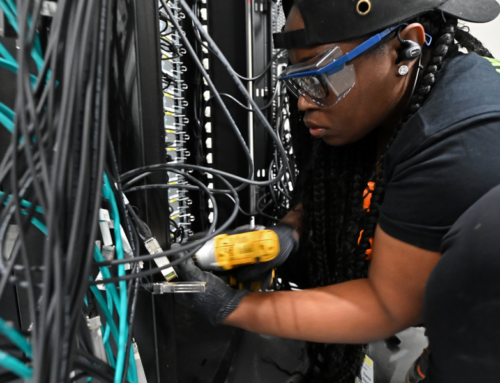Bitcoin Vs. Gold: The New Era Of Reserve Assets
December 25, 2024
Traditional pillars of financial stability, such as gold and foreign currency reserves, now face scrutiny in an era of inflationary pressures, economic sanctions, and the demand for sovereignty over national assets. Gold and fiat currencies have dominated national reserves for centuries, but a new era demands innovative solutions. Could Bitcoin, the world’s first decentralized digital currency, emerge as the solution to these ever-growing issues?
Recent developments indicate a growing trend among nations considering Bitcoin as part of their financial strategy. El Salvador’s audacious decision in 2021 to adopt Bitcoin as legal tender and establish a national Bitcoin reserve ignited a global debate on the future of reserve assets. As of December 2024, the government holds approximately 5,944 bitcoins, valued at over $560 million, aiming to leverage Bitcoin’s potential to strengthen its economy. Meanwhile, legislators in Brazil have introduced a bill to create a Sovereign Strategic Bitcoin Reserve (RESBit), proposing to allocate up to 5% of Brazil’s international reserves to Bitcoin.
Even in the US, discussions have emerged about establishing a strategic Bitcoin reserve. President-elect Donald Trump has proposed creating a ‘Strategic National Bitcoin Stockpile,’ suggesting that the US government retain bitcoins acquired through asset forfeitures to bolster national financial security.
A Vision for Bitcoin-Backed Treasury Management
With over a decade of market endurance, Bitcoin offers nations a hedge against inflation, unparalleled transparency through blockchain, and the potential to outpace gold as the dominant reserve asset. This trillion-dollar opportunity emphasizes the need for secure storage, clear legal frameworks, and balanced diversification with traditional assets, paving the way for a future-proof financial system.
Stelian Balta, founder of HyperChain Capital, embodies a forward-thinking approach to economic resilience in a rapidly shifting financial landscape. With expertise that spans blockchain technology and macroeconomic strategy, Balta sees Bitcoin as an asset and a transformational tool for reimagining treasury frameworks. “Within the next decade, Bitcoin will surpass gold as the world’s leading store of value, which would imply a price of at least $1 million per Bitcoin. Being in the market for 12 years, I’ve seen it survive and thrive through every storm as an asset class. Forward-thinking countries should think about moving from gold to Bitcoin.
Most likely, the USA will lead the way and other nations are likely to follow suit. This presents a trillion-dollar opportunity, offering a mathematically proven hedge against inflation and a more dynamic store of value for the future.”
Similarly, Matthew Ferranti, an economist with the US Intelligence Community, points to Bitcoin’s resistance to financial sanctions as a critical advantage for countries navigating geopolitical uncertainties: “To the extent that gold is a reserve asset, so is Bitcoin.” Unlike traditional reserve assets held in foreign custodial accounts, Bitcoin offers the possibility of self-custody, reducing reliance on third-party institutions that may freeze or restrict access to assets in politically tense scenarios.
MicroStrategy, led by Michael Saylor, has already pioneered Bitcoin-backed treasury management at the corporate level. As of December 23, 2024, the company has accumulated over 444,262 bitcoins as part of its strategic reserve strategy, showcasing how Bitcoin can serve as a cornerstone for long-term value preservation and financial agility.
As a whole, Balta’s vision for integrating Bitcoin into national reserves centers on simplicity and strategic foresight through four main pillars:
- Legal Infrastructure: “Clarity is the most important legal foundation for paving the way for Bitcoin as a reserve asset. Governments must codify Bitcoin’s status as a reserve asset to foster confidence and stability across sectors.”
- Security Protocols: “We need state-of-the-art multi-signature storage solutions. This minimizes risks while safeguarding the reserves against potential threats.”
- Transparency: “Independent audits and open disclosures ensure trust, not just among citizens but also among global stakeholders.”
- Strategic Integration: “Bitcoin shouldn’t stand alone. It should complement traditional reserves like gold and fiat, forming a balanced and dynamic portfolio.”
Blockchain’s Impact on Governance and On-Chain Asset Management
Beyond its role as a reserve asset, Bitcoin is a tangible expression of the broader promise of blockchain technology to redefine governance and asset management. The UK Treasury has already explored how on-chain asset management could transform the investment landscape by leveraging tokenization.
Applications such as tokenized assets serving as collateral for money market funds and their integration into fully on-chain markets demonstrate the potential to improve efficiency, transparency, and accountability across the investment sector.
“Blockchain is so much more than just currency innovation,” Balta asserts. “It’s a tool for rebuilding trust, creating efficiencies, and ensuring accountability across financial systems.” Balta envisions a future where financial systems fully operate on-chain, providing verifiability and clarity at every level. “On-chain asset management transforms financial systems since it inspires confidence by offering accountability for public and private entities alike.”
Bottom Line
The geopolitical influence of the 21st century revolves around financial sovereignty. For countries willing to act boldly, Bitcoin offers a blueprint for the future: secure reserves safeguarded by cutting-edge technology, transparency that builds trust at every level, and the agility to thrive in volatile geopolitical landscapes.
Search
RECENT PRESS RELEASES
Related Post




